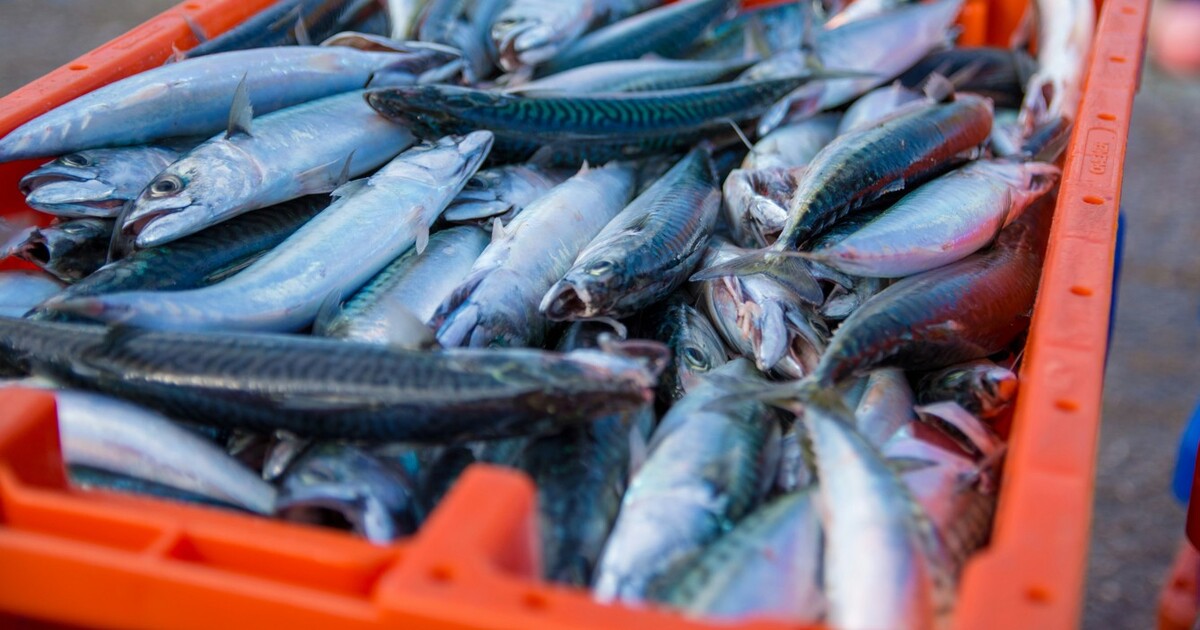If Fish Get Sick, What Is Left to Eat?
Many staples of the global food supply are increasingly under threat. The latest example — fish.
May 28, 2025

We are confronting the end of so much familiar to us. Not quite the world yet, but freedom of speech? Viable newspaper circulations? Government support for the arts, science, public transport and social responsibility? Correct use of apostrophes?
Under threat in the food world is pretty much all that we have been so used to eating for so long that we have not given it much thought — the roast chicken dinner, meat, affordable coffee and chocolate. The death of blueberries? Quite possibly. Now fish.
The global fish farming industry
Not too long ago, we were being urged to reduce our meat consumption for the sake of climate change and look to fish for our protein supply.
Fish farming is a vital contributor to global food security, an industry projected to reach $444.38 billion by 2029 that produced around 130.9 million tons of fish in 2022.
To supply a growing market, fish farms have expanded at an astonishing rate — some even on land in Norway, Switzerland, British Columbia, Iceland, Lesotho, the UK, the United States and the United Arab Emirates.
We have already been alerted to the problems surrounding some fish farms. Too many are hotbeds of infestation, with lice accumulating on the bodies of fish to the point they need regular dosing with antibiotics.
Their feces infect the floor of the ocean beneath them and bottom-feeding marine life. Escapees can breed with wild fish, weakening the genetic makeup of native stocks.
A new threat emerging
Now a deadly parasite is devastating global fish farms, so far at a cost to the industry of more than $66 million a year.
A group of microscopic parasites called myxozoa have been discovered in the Amazon infecting fish with lethal diseases that include kidney disease in salmon, swim bladder inflammation in carp and gill disease in catfish.
The Amazon may be nowhere near where you live. But the parasites, hidden inside their hosts, threaten all fish, given they survive in marine environments as well as freshwater ones.
More than half the fish examined in the Amazon basin were found to be infected — endangering local fish farming, biodiversity and recreational fishing.
In parts of the western United States, similar parasites have killed off as much as 90% of trout populations. Though less commonly, these myxozoa can also infect amphibians, reptiles, birds and mammals.
Preventing the spread
Scientists are working urgently to prevent the spread of the parasites. They have set up a floating lab on the Amazon because, says marine biotechnology Professor Paul Long of King’s College London, “The diversity of life in the Amazon basin is undisputed and still little-known.”
There is hope. “To our surprise,” he reports, “we uncovered a new process of gene regulation that was previously believed not to exist in these parasites.” The team is now looking into how these genes are turned on and off to develop gene-based vaccines to control fish pathogens.
“Studies on these parasites are essential for developing strategies to control or reduce their impact on the health of farmed fish,” says Dr. Santiago Benites de Padua, manager of the Brazilian Fish Company and a veterinarian.
Whether the vaccines will carry, like antibiotics, through to diners of the fish was not part of the report.
A little history
Fish farming is not new. It began in the 1730s when a German naturalist experimented with taking salmon eggs from streams and trying to hatch them. By the early 19th century, hatcheries were being built around Europe to raise fish to supplement wild stocks, in decline even then.
While their success was limited, by the 1960s the salmon farming industry was under way with Norwegian farmers using cages floating in fjords to raise Atlantic salmon fattened on special feed.
Today, salmon raised in net pens, predominantly off the coasts of Norway and Chile, account for 70% of the 3.7 million tons eaten globally each year.
At any fishmonger, it is hard to tell whether your farmed fish comes from a good- or poor-practice operation. Some countries are more regulated than others, with salmon from Scotland, the Faroes, Iceland and Norway less likely to be affected by lice — though it is not guaranteed.
The Soil Association, the UK body that certifies everything organic, has threatened to withdraw from the Scottish salmon sector without significant improvement to environmental and fish welfare practices.
Chile, whose farmed salmon is among the cheapest on the market, faces ongoing challenges over its impact on the environment despite regulations — as do the fish farms of Brazil and Argentina.
The alternative is also risky
But if we are to avoid farmed fish and eat only line-caught fish, unless that method, too, is highly regulated, it would quickly deplete stocks of those.
Already, wild fisheries (which do not include line-caught fish) contribute up to 83.3 million tons, a trillion and more of individual fish up to half of which, unsuitable for market, are reduced to fishmeal and oil that — think about this — go to feed farmed fish and farm animals.
Some trawlers use complex gears and nets up to 240 meters wide by 160 meters deep which, strung up to 30 together, can reach for miles. Other trawlers dredging the ocean floor destroy the marine environment.
Off the west coast of Scotland, Norwegian dredgers for scallops kill off the sand eels that feed puffins as well as the immature scallops growing into the next generation.
Switching to insects?
This puts us back to the argument that just about the only protein we can reliably consume without harming supplies or the environment are insects.
I do not see that playing well yet (although you will not be short of supplies of processed food. This attack on UK government food policy by the industrial food complex will not be an action limited to Britain).
Legumes and pulses: The answer?
If you are not lucky enough to have access to fishmongers supplied by small family-run fishing boats using thoughtful techniques, the best option is a diet rich in legumes and vegetables — nutrient-dense food offering a wide range of minerals, vitamins, fiber and proteins.
We are familiar with the vegetable-and-olive-oil-based Mediterranean diet. But the countries of the Middle East thrive on legumes and pulses.
Takeaways
Many staples of the global food supply are increasingly under threat. The latest example — fish.
Fish farming is a vital contributor to global food security, an industry projected to reach $444.38 billion by 2029 that produced around 130.9 million tons of fish in 2022.
To supply a growing market, fish farms have expanded at an astonishing rate — some even on land in Norway, Switzerland, British Columbia, Iceland, Lesotho, the UK, the United States and the United Arab Emirates.
A deadly parasite is devastating global fish farms — so far at a cost to the industry of more than $66 million a year. A group of microscopic parasites called myxozoa have been discovered in the Amazon infecting fish with lethal diseases.
Fish farming is not new. It began in the 1730s when a German naturalist experimented with taking salmon eggs from streams and trying to hatch them. By the early 19th century, hatcheries were being built around Europe.
At any fishmonger, it is hard to tell whether your farmed fish comes from a good- or poor-practice operation. Some countries are more regulated than others.
If you are not lucky enough to have access to fishmongers supplied by small family-run fishing boats using thoughtful techniques, the best option is a diet rich in legumes and vegetables.
Read previous

Just The Facts
The U.S. Debt Spiral
May 26, 2025
